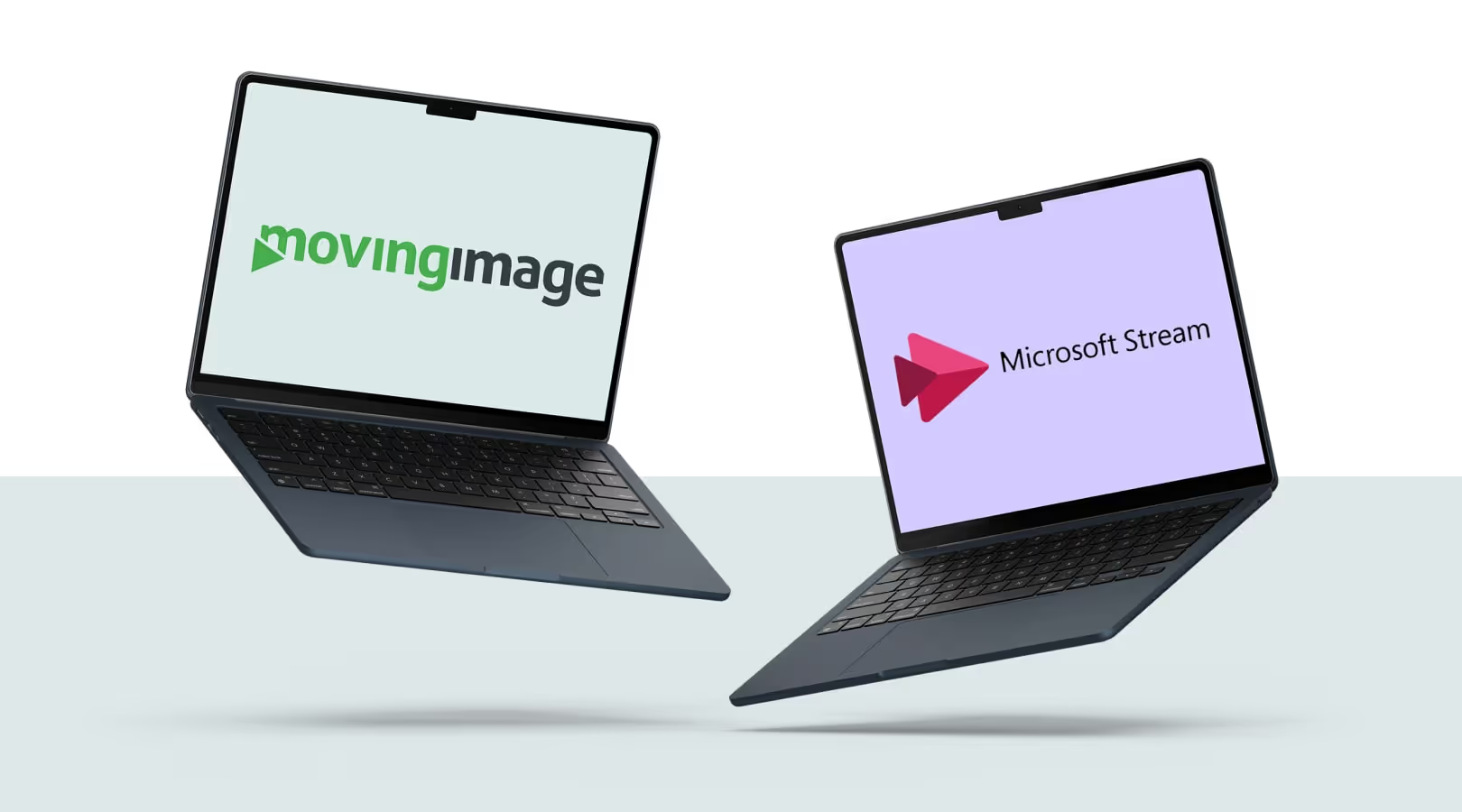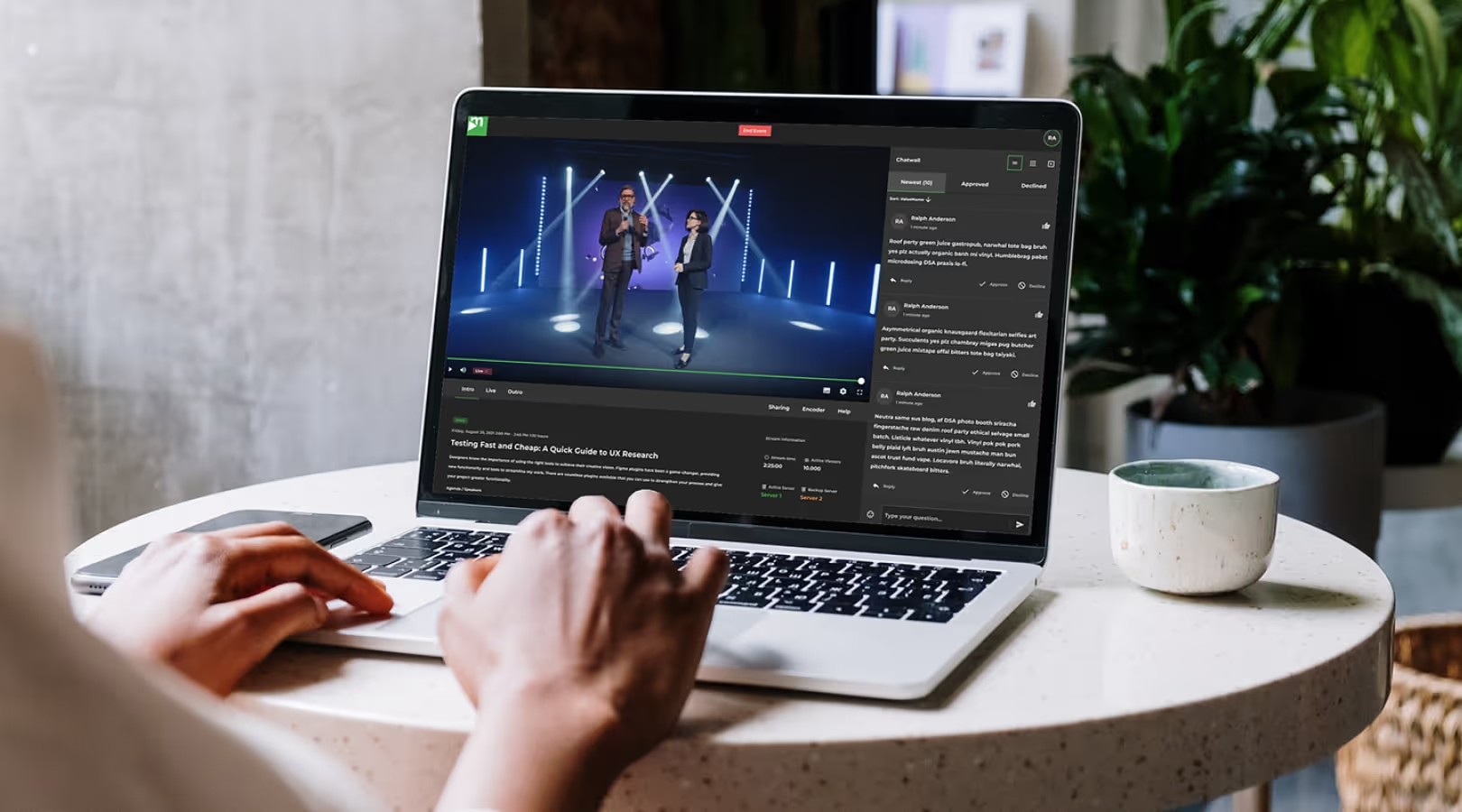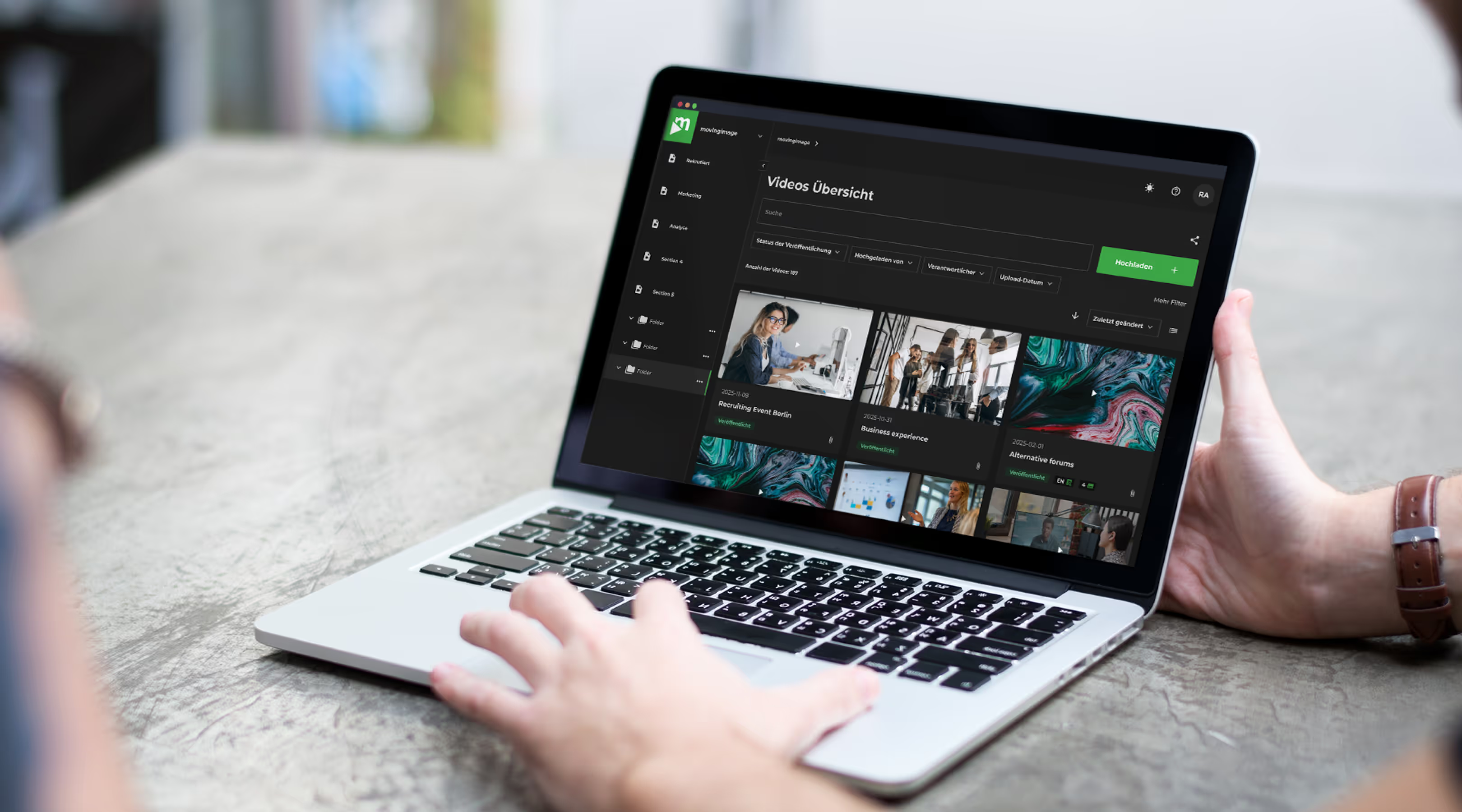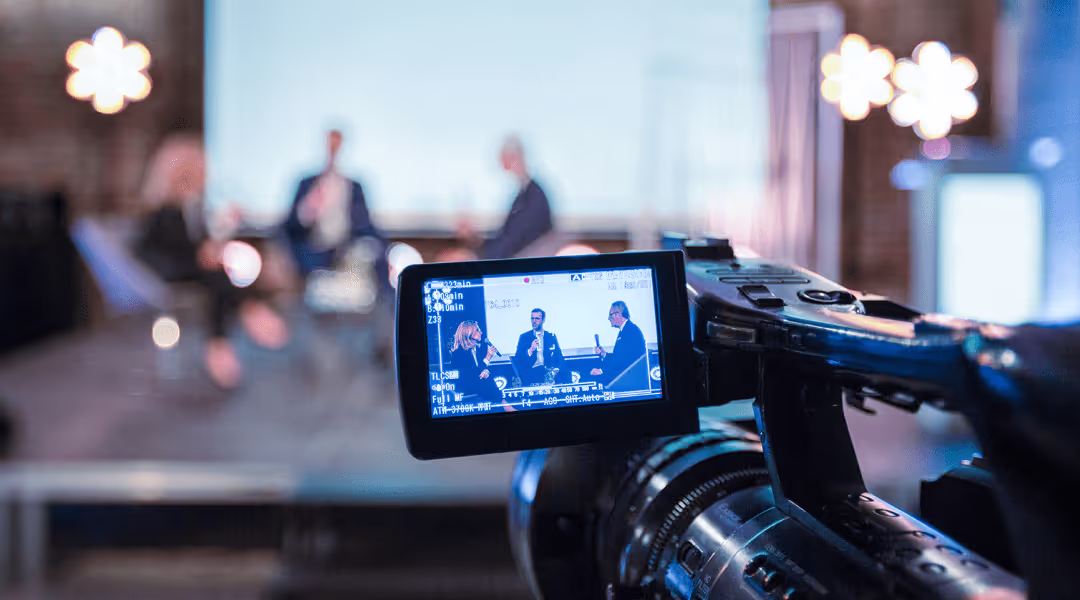Video production: planning & process of a video-shoot
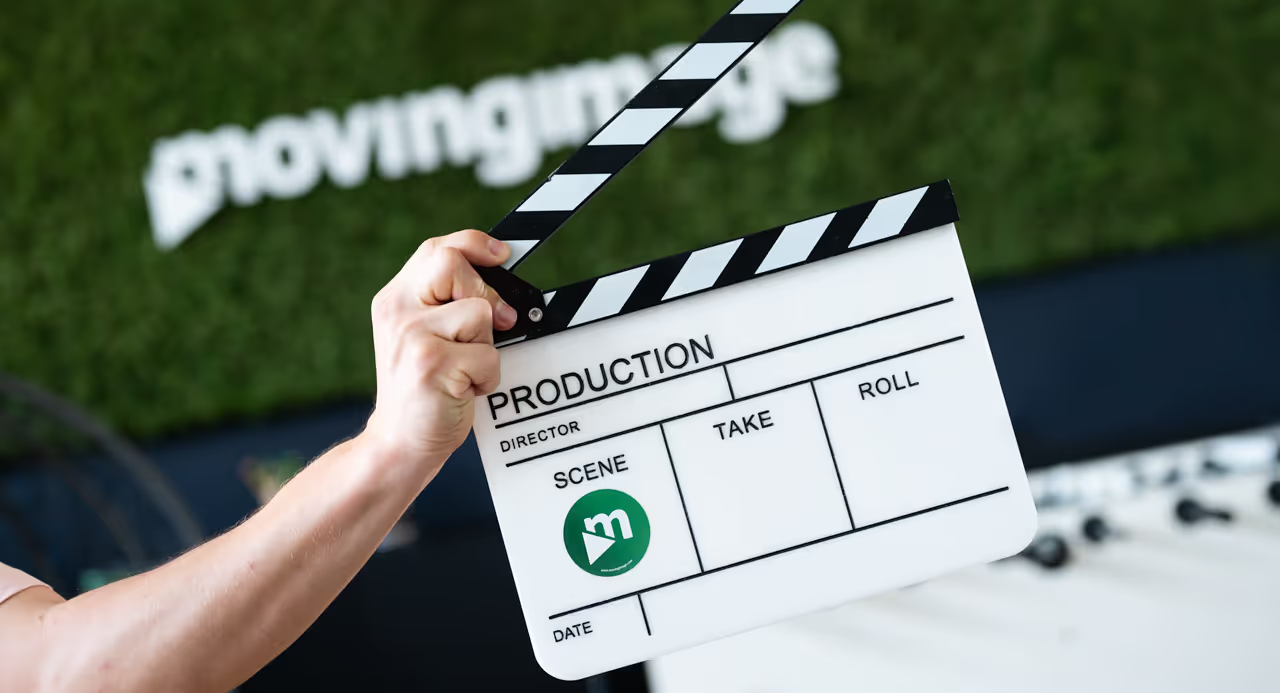
Driving your success with video

Video production: planning & process of a video-shoot
Step 1: Consultation
The initial consultation phase is arguably the most important part of a video production — and that may come as a surprise. But if you want a video that really stands out and captures what makes your company unique, it all starts here: with kick-off meetings between the production team and you as the client, identifying your core message and deciding on a fitting style.
We’re happy to take our time in these conversations and love being inspired by your examples — be it video references or music suggestions. That helps us all develop a clear, shared vision early on, which makes the rest of the process much smoother.
To structure this stage, we work with a briefing sheet that captures the essentials: What kind of video are you looking for? Who’s your target audience? Where will the video be published? What is the one key message that absolutely needs to come across? Once these basics are nailed down, the wheels are in motion.
Step 2: Pre-production (concept & shoot planning)

Throughout the process, you’ll have a dedicated point of contact on our side — usually the editor, who will guide your project from start to finish.
In the pre-production phase, the editor creates a concept based on the briefing. This concept outlines the visual scenes and the corresponding spoken content (for example, voiceover text) in the order they will appear in the video. If interviews are planned, this will also include suggested employee statements.
We’re happy to help you select the right people for on-camera roles, and can even conduct a mini casting to find those who come across as the most authentic.
The concept also includes music suggestions and creative ideas for visually striking segments that don’t rely on voice or dialogue — the little “wow moments” that make your video pop. And to keep everything manageable, we estimate the length of each scene in minutes or seconds, so that the final video closely matches your expectations.

Once the concept is finalized, it’s time for the shoot schedule. This plan specifies when, where, and how long each scene will be filmed — and, of course, who will be involved.
Because the people appearing in the video won’t usually be available for a full day, we schedule specific time slots in advance. That means the shooting order often differs from the order in the final edit. Weather conditions can also affect the schedule, especially for outdoor scenes.
Newcomers to video production are sometimes surprised by how long individual shots take. Even if an employee appears for just one short quote in the finished film, it usually takes several minutes of warm-up to get a natural, engaging delivery.
We also allow time for alternative takes. For example, a time-lapse scene that only lasts a few seconds on screen might require an hour of shooting. That’s because the camera operator needs time to frame the shot, adjust camera speed, and fine-tune lighting on site.
A detailed schedule makes the production smoother for everyone involved — from the film crew to your on-site contact person and your employees on camera.
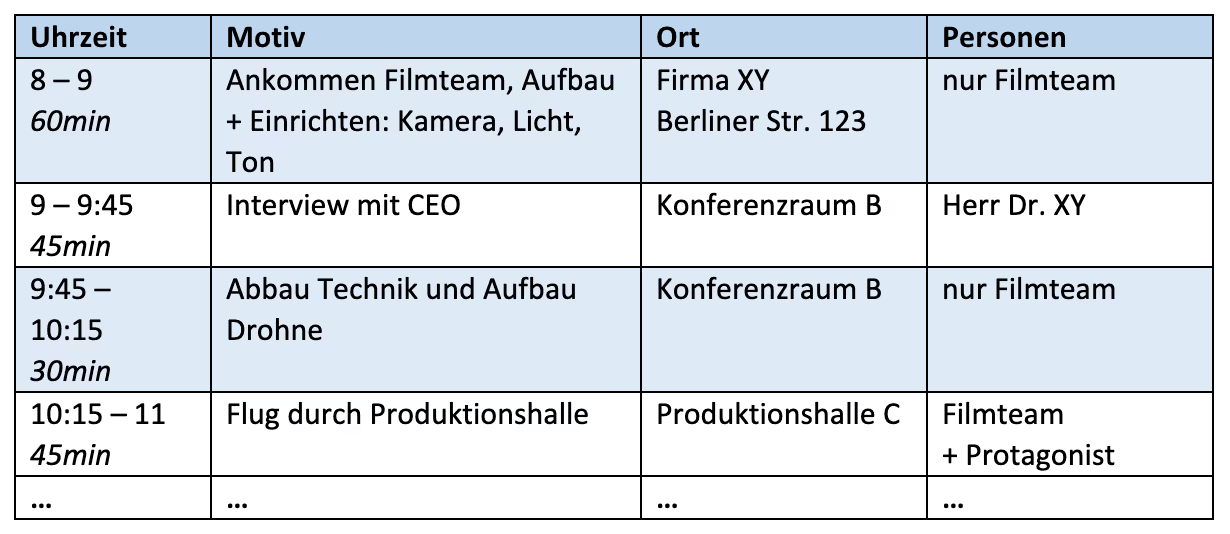
In addition to casting, we highly recommend scouting the shoot locations ahead of time. Which room is best for which interview? Can we grab bonus footage while moving between locations? Are drone shots technically possible in this area, or do we need a plan B?
Clarifying these questions in advance helps ensure an efficient, stress-free shoot.
Step 3: The shoot
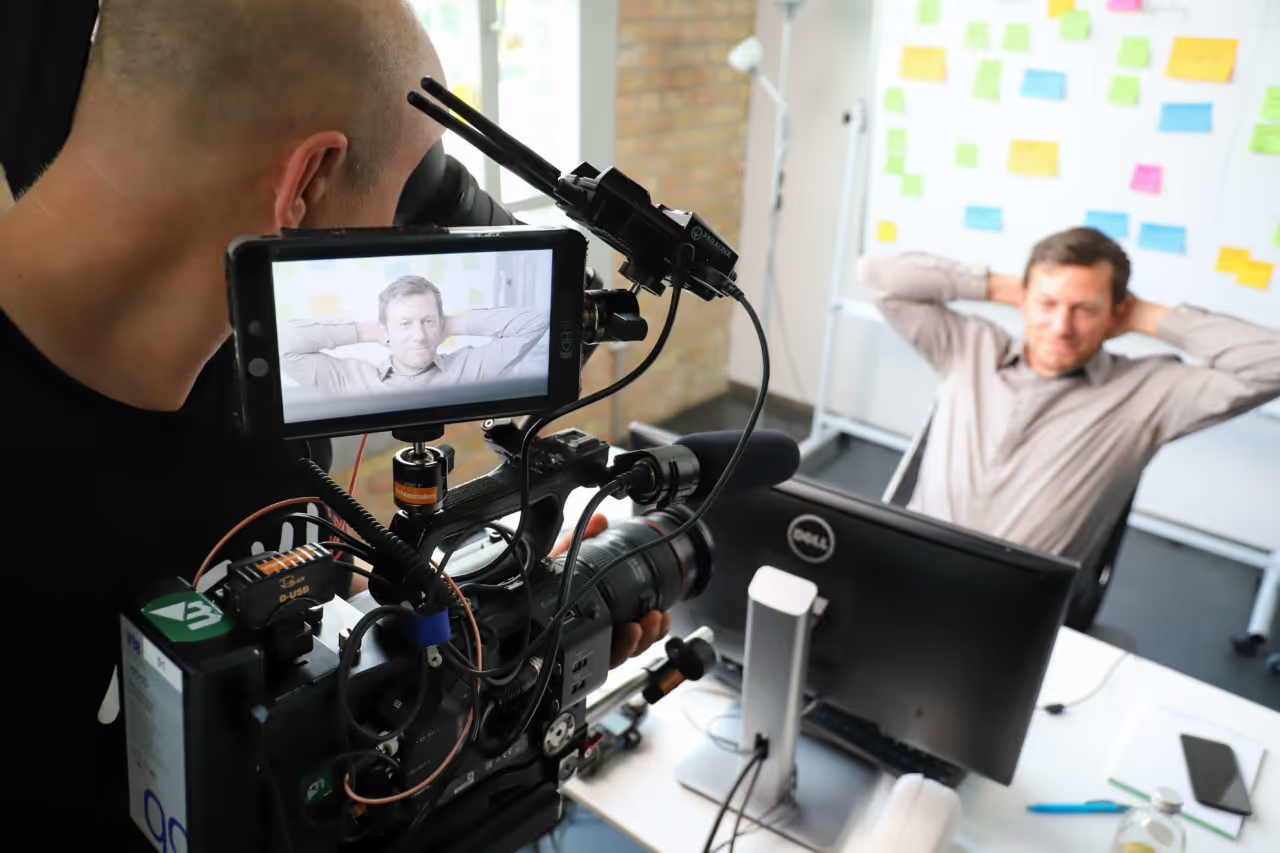
Now the real action begins — it’s time to shoot. Every scene outlined in the concept and scheduled in the plan gets brought to life.
For a typical two-minute employer branding video, we usually plan one to two full shoot days (8–10 hours each). The standard crew includes three people: the editor (who also acts as director), a camera operator, and a production assistant responsible for technical setup and sound.
Ideally, someone from your team will be present too. You know the locations inside out, you've already briefed the employees involved, and you’ve secured the rooms. In short: you open the doors for us.
The core gear includes cameras, sound, and lighting equipment. Lighting, in particular, is often underestimated. While the camera captures the action, it’s the lighting that truly brings the scene to life — separating the subject from the background, adding warmth or industrial coolness depending on the look you’re going for.
Interview setups are more involved. Employees might be surrounded by boom mics, light panels, a blinking red camera, and a film crew. It’s the editor’s job to help them relax and forget the setup — at least a little.
A key part of that is letting people speak in their own words. We can always edit later, so there’s no pressure to get everything perfect in one take.
We also structure interviews more like conversations. It’s more natural for the people on camera and more authentic for viewers.
And then there’s the fun part — the “wow shots.” These might include drone footage or scenes captured with small action cams attached to bikes, cars, or machines. They add energy and striking visuals from unexpected angles.
Step 4: Post-production
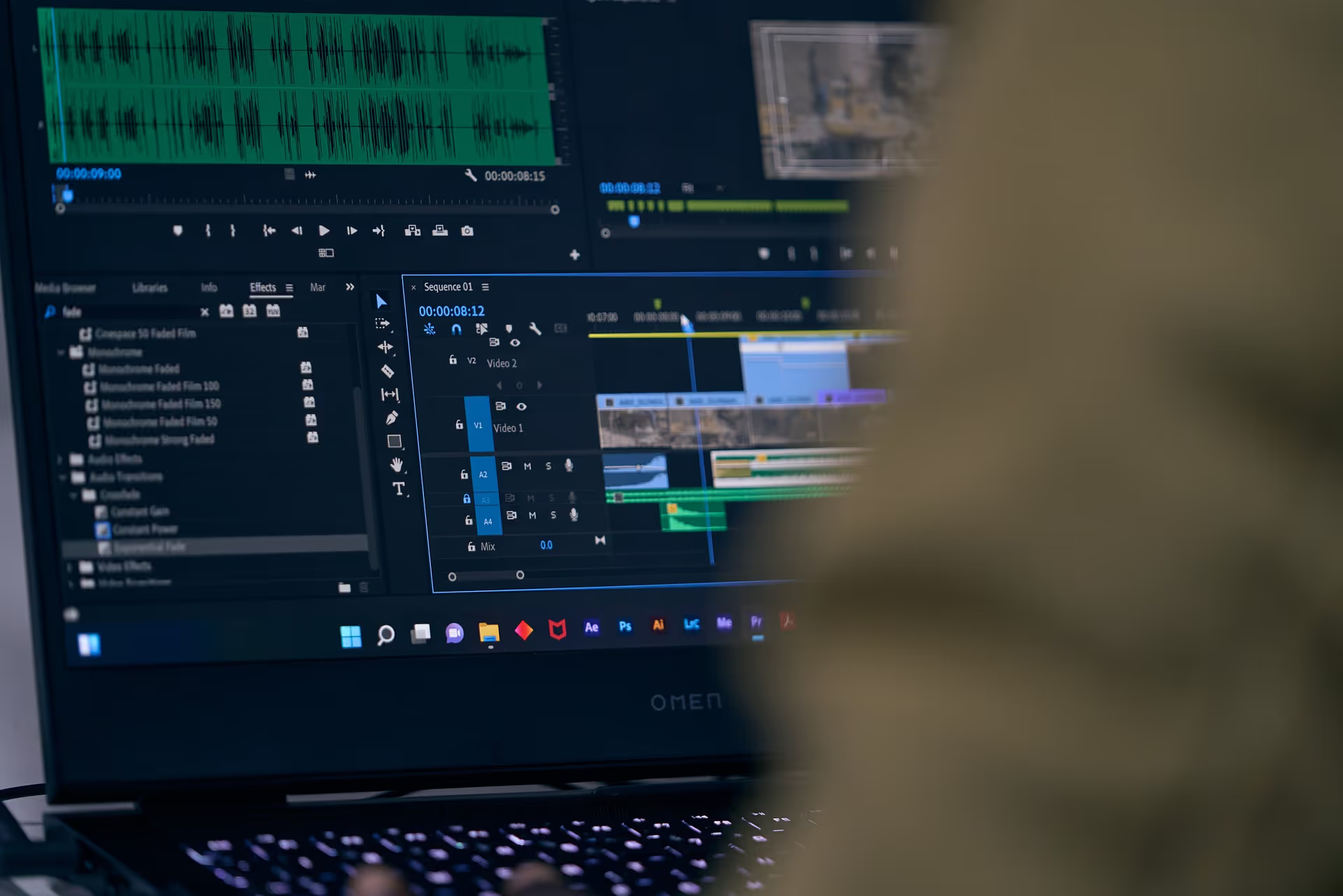
Once filming wraps, post-production begins — another collaborative process. The editor reviews the footage and does an initial rough cut of the best scenes and sound bites, then works with the video editor on the full edit.
This is where everything comes together: selected clips, original sound, background music, and graphics are all placed into the editing timeline.
If the video includes animations or special effects, a motion designer handles those in parallel — always aligned with your company’s branding.
Once all elements are in place, the footage is color graded to give the film a cohesive, polished look. And just like that: the first version is ready for your review.
How long does a video production take?

Producing your video typically takes four to six weeks. While the actual hands-on work only spans about two weeks — including 2–3 days of concept work, 1–2 days for prep, 2 shoot days, and 3–5 days for post-production — review cycles, feedback, and adjustments often add extra time.
For time-sensitive projects like event videos that need to go live the same day, editing begins immediately after filming. In those cases, footage is often shot using a LUT (lookup table), which reduces or eliminates the need for color grading.
How much does video production cost?
There’s no single answer to that — it depends on the number of production days, the complexity of the shoot, the equipment used, and whether travel or accommodation is needed.
That said, a typical budget ranges from €5,000 to €12,000. And yes, we offer new-customer discounts!
3 Tips from the video pros
- Want to save on costs? You could try producing the video in-house — especially if you’re creating employee-generated content and have some creative colleagues on hand. But for concept development and final polish (like color grading and sound mixing), we strongly recommend working with a professional agency.
- Keep your message focused. Whether it’s a recruiting or image video, stick to one or two core messages. Highlight what truly makes your company unique. Cramming in too many benefits will dilute the impact — and leave your audience remembering little or nothing.
- Authenticity doesn’t happen by accident. It needs to be created. That’s where an experienced film crew makes a big difference — helping your employees feel comfortable and confident in front of the camera.
Is a professional video agency worth it?
Absolutely. Reach out with your project idea — no strings attached — and we’ll figure out together how to bring it to life.
Our Speakers
Step 1: Consultation
The initial consultation phase is arguably the most important part of a video production — and that may come as a surprise. But if you want a video that really stands out and captures what makes your company unique, it all starts here: with kick-off meetings between the production team and you as the client, identifying your core message and deciding on a fitting style.
We’re happy to take our time in these conversations and love being inspired by your examples — be it video references or music suggestions. That helps us all develop a clear, shared vision early on, which makes the rest of the process much smoother.
To structure this stage, we work with a briefing sheet that captures the essentials: What kind of video are you looking for? Who’s your target audience? Where will the video be published? What is the one key message that absolutely needs to come across? Once these basics are nailed down, the wheels are in motion.
Step 2: Pre-production (concept & shoot planning)

Throughout the process, you’ll have a dedicated point of contact on our side — usually the editor, who will guide your project from start to finish.
In the pre-production phase, the editor creates a concept based on the briefing. This concept outlines the visual scenes and the corresponding spoken content (for example, voiceover text) in the order they will appear in the video. If interviews are planned, this will also include suggested employee statements.
We’re happy to help you select the right people for on-camera roles, and can even conduct a mini casting to find those who come across as the most authentic.
The concept also includes music suggestions and creative ideas for visually striking segments that don’t rely on voice or dialogue — the little “wow moments” that make your video pop. And to keep everything manageable, we estimate the length of each scene in minutes or seconds, so that the final video closely matches your expectations.

Once the concept is finalized, it’s time for the shoot schedule. This plan specifies when, where, and how long each scene will be filmed — and, of course, who will be involved.
Because the people appearing in the video won’t usually be available for a full day, we schedule specific time slots in advance. That means the shooting order often differs from the order in the final edit. Weather conditions can also affect the schedule, especially for outdoor scenes.
Newcomers to video production are sometimes surprised by how long individual shots take. Even if an employee appears for just one short quote in the finished film, it usually takes several minutes of warm-up to get a natural, engaging delivery.
We also allow time for alternative takes. For example, a time-lapse scene that only lasts a few seconds on screen might require an hour of shooting. That’s because the camera operator needs time to frame the shot, adjust camera speed, and fine-tune lighting on site.
A detailed schedule makes the production smoother for everyone involved — from the film crew to your on-site contact person and your employees on camera.

In addition to casting, we highly recommend scouting the shoot locations ahead of time. Which room is best for which interview? Can we grab bonus footage while moving between locations? Are drone shots technically possible in this area, or do we need a plan B?
Clarifying these questions in advance helps ensure an efficient, stress-free shoot.
Step 3: The shoot

Now the real action begins — it’s time to shoot. Every scene outlined in the concept and scheduled in the plan gets brought to life.
For a typical two-minute employer branding video, we usually plan one to two full shoot days (8–10 hours each). The standard crew includes three people: the editor (who also acts as director), a camera operator, and a production assistant responsible for technical setup and sound.
Ideally, someone from your team will be present too. You know the locations inside out, you've already briefed the employees involved, and you’ve secured the rooms. In short: you open the doors for us.
The core gear includes cameras, sound, and lighting equipment. Lighting, in particular, is often underestimated. While the camera captures the action, it’s the lighting that truly brings the scene to life — separating the subject from the background, adding warmth or industrial coolness depending on the look you’re going for.
Interview setups are more involved. Employees might be surrounded by boom mics, light panels, a blinking red camera, and a film crew. It’s the editor’s job to help them relax and forget the setup — at least a little.
A key part of that is letting people speak in their own words. We can always edit later, so there’s no pressure to get everything perfect in one take.
We also structure interviews more like conversations. It’s more natural for the people on camera and more authentic for viewers.
And then there’s the fun part — the “wow shots.” These might include drone footage or scenes captured with small action cams attached to bikes, cars, or machines. They add energy and striking visuals from unexpected angles.
Step 4: Post-production

Once filming wraps, post-production begins — another collaborative process. The editor reviews the footage and does an initial rough cut of the best scenes and sound bites, then works with the video editor on the full edit.
This is where everything comes together: selected clips, original sound, background music, and graphics are all placed into the editing timeline.
If the video includes animations or special effects, a motion designer handles those in parallel — always aligned with your company’s branding.
Once all elements are in place, the footage is color graded to give the film a cohesive, polished look. And just like that: the first version is ready for your review.
How long does a video production take?

Producing your video typically takes four to six weeks. While the actual hands-on work only spans about two weeks — including 2–3 days of concept work, 1–2 days for prep, 2 shoot days, and 3–5 days for post-production — review cycles, feedback, and adjustments often add extra time.
For time-sensitive projects like event videos that need to go live the same day, editing begins immediately after filming. In those cases, footage is often shot using a LUT (lookup table), which reduces or eliminates the need for color grading.
How much does video production cost?
There’s no single answer to that — it depends on the number of production days, the complexity of the shoot, the equipment used, and whether travel or accommodation is needed.
That said, a typical budget ranges from €5,000 to €12,000. And yes, we offer new-customer discounts!
3 Tips from the video pros
- Want to save on costs? You could try producing the video in-house — especially if you’re creating employee-generated content and have some creative colleagues on hand. But for concept development and final polish (like color grading and sound mixing), we strongly recommend working with a professional agency.
- Keep your message focused. Whether it’s a recruiting or image video, stick to one or two core messages. Highlight what truly makes your company unique. Cramming in too many benefits will dilute the impact — and leave your audience remembering little or nothing.
- Authenticity doesn’t happen by accident. It needs to be created. That’s where an experienced film crew makes a big difference — helping your employees feel comfortable and confident in front of the camera.
Is a professional video agency worth it?
Absolutely. Reach out with your project idea — no strings attached — and we’ll figure out together how to bring it to life.



.avif)


.avif)





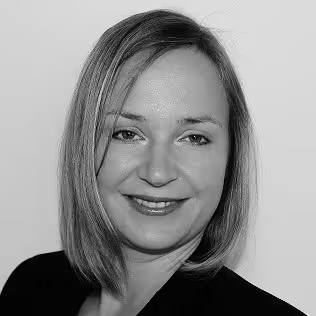
.avif)

